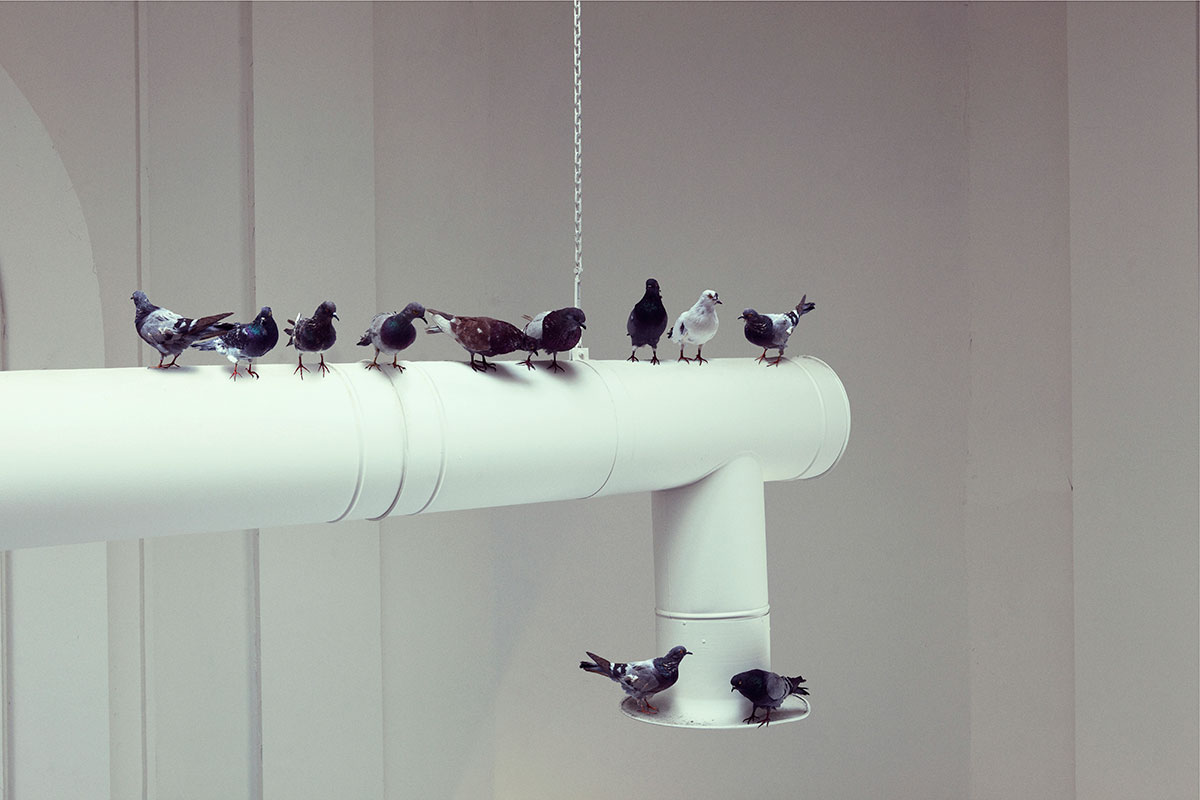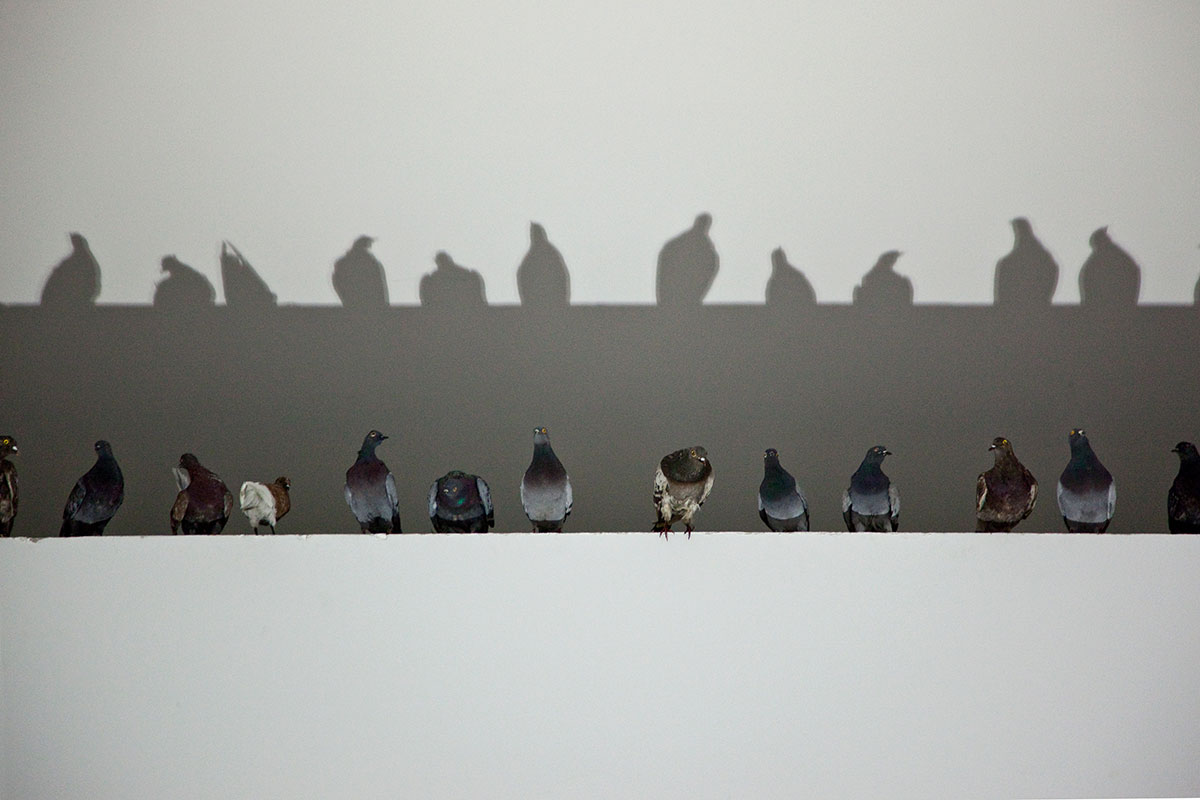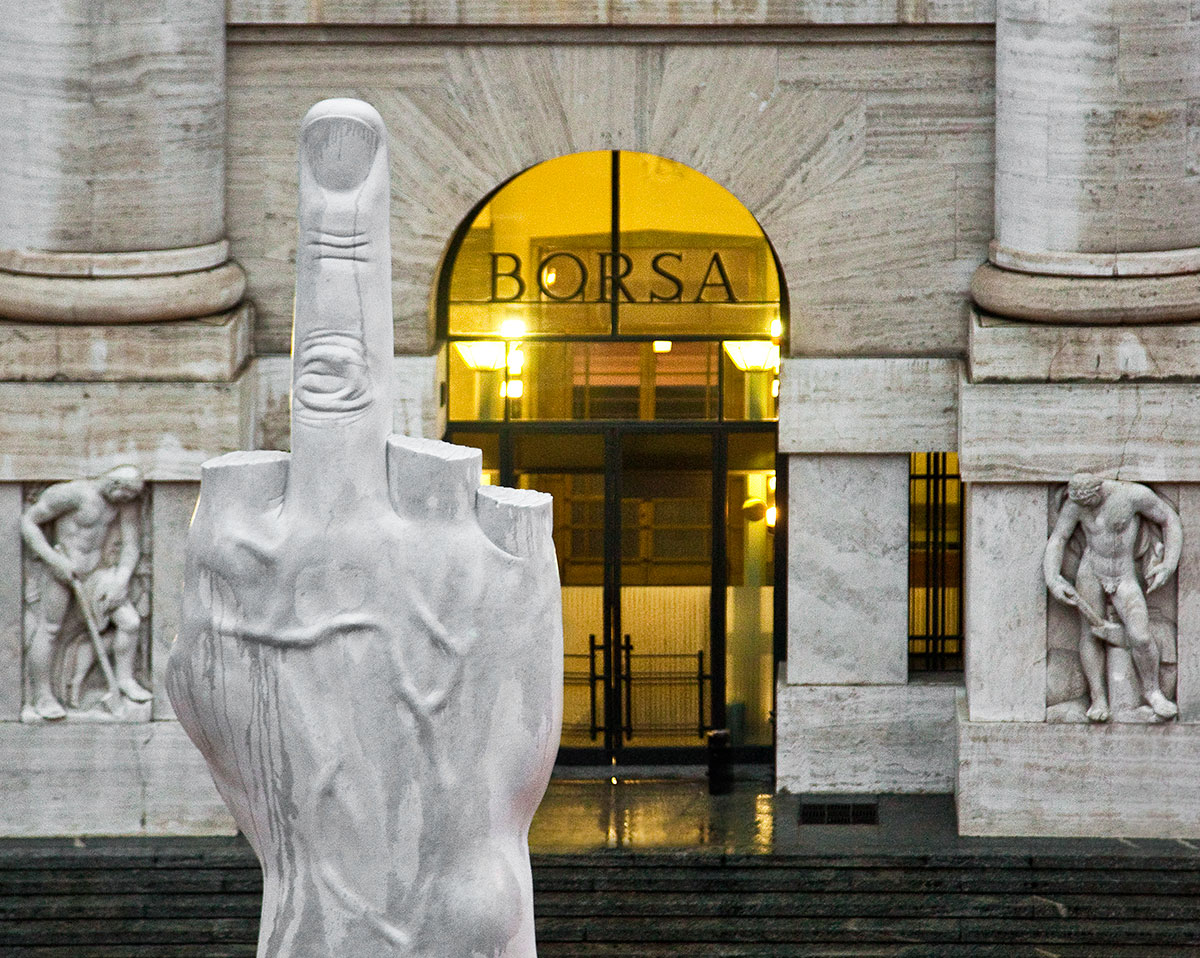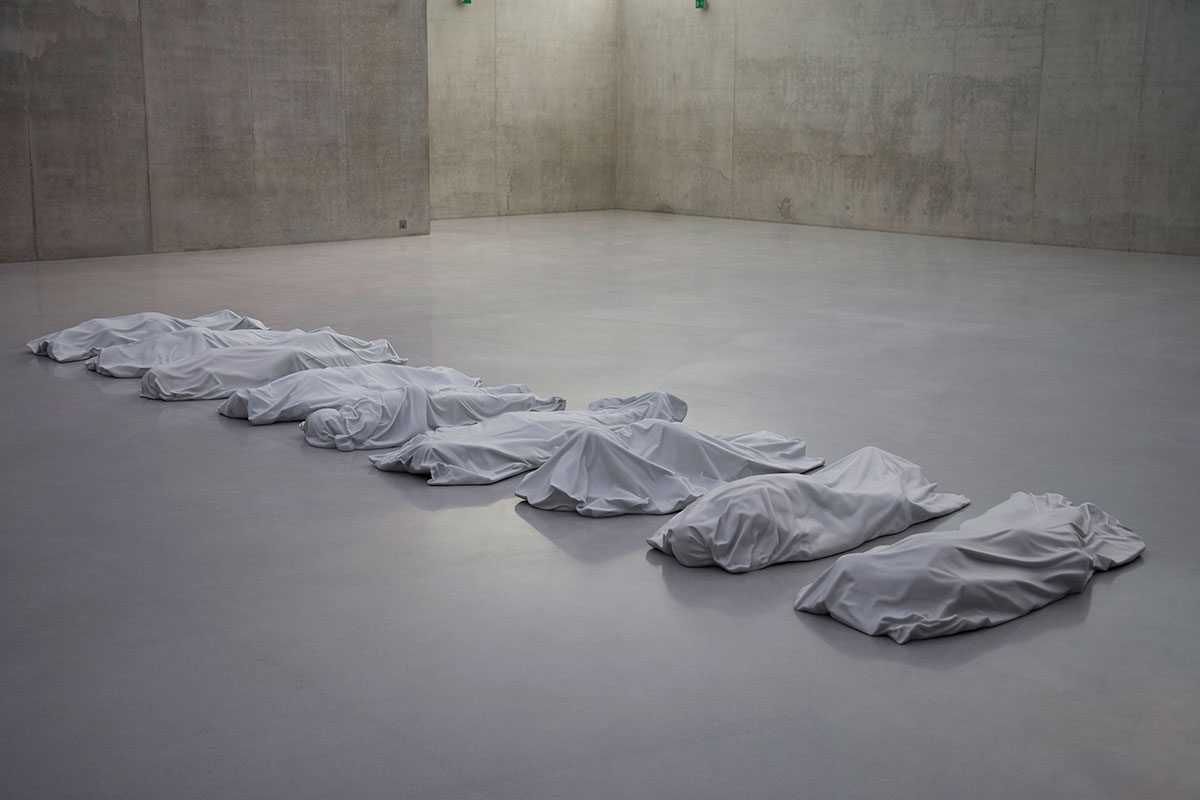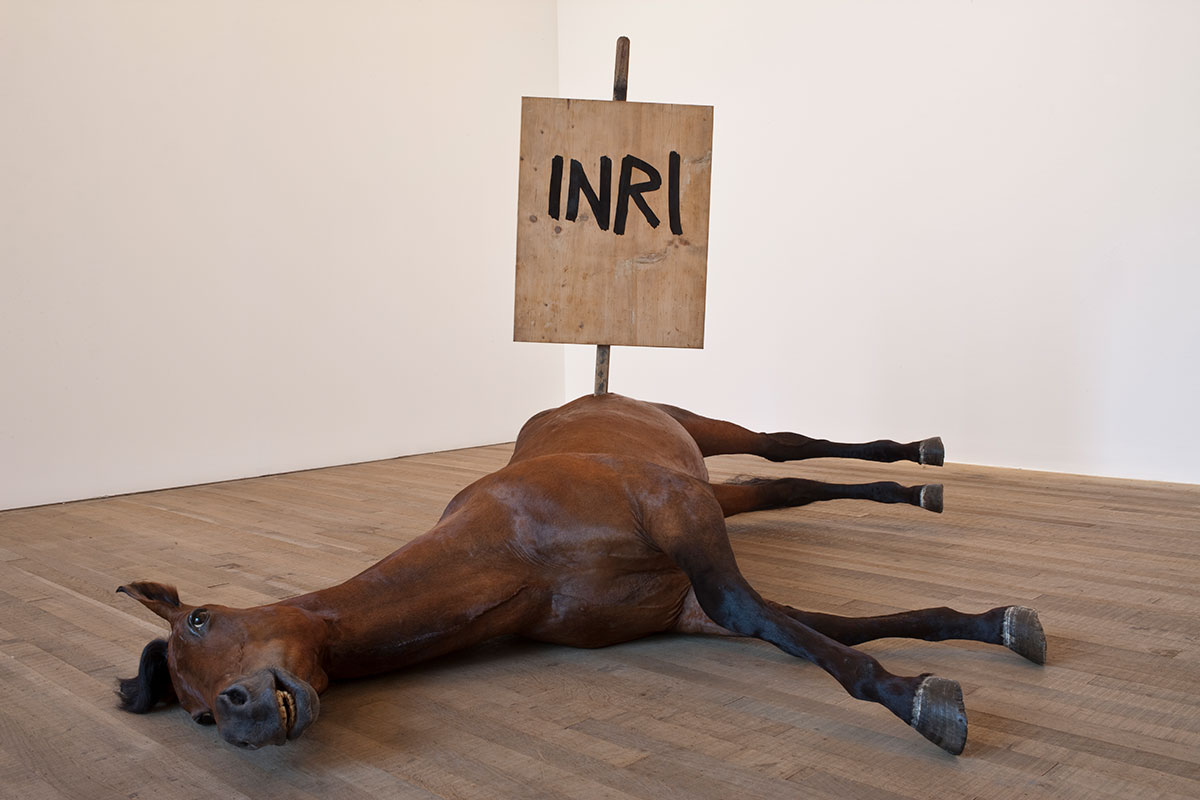ART-PRESENTATION: Maurizio Cattelan-Breath Ghosts Blind
 Since the early 1990s Maurizio Cattelan has been internationally recognized for his humorous and ironic works which provoke and challenge the limits of contemporary value systems. In choosing symbols whose representations offer complex systems of intertwined meaning, Cattelan’s work refuses to take a precise moral or ideological position.
Since the early 1990s Maurizio Cattelan has been internationally recognized for his humorous and ironic works which provoke and challenge the limits of contemporary value systems. In choosing symbols whose representations offer complex systems of intertwined meaning, Cattelan’s work refuses to take a precise moral or ideological position.
By Dimitris Lempesis
Photo: Pirelli HangarBicocca Archive
Maurizio Cattelan conceived specially for the spaces of Pirelli HangarBicocca, the exhibition “Breath Ghosts Blind” that brings together a revised configuration of a historical works with new. The exhibition unfolds in a series of acts dealing with existential concepts such as the fragility of life, memory, the individual and collective sense of loss. Amongst symbolic references and images that belong to our collective imagery, the unique site-specific project challenges the current system of values. “Breath Ghosts Blind” is the culmination of a project the artist has been working on for a long time and it celebrates his return to Milan after more than ten years. Taking place in the city that has already been home to several of his most significant interventions, from “Untitled” (2004), the debated installation in Piazza XXIV Maggio, to the monumental public sculpture “L.O.V.E” (2010). The exhibition is anticipated by the radio project “Bidibidobidiboo”, that is part of the “Te la do io l’arte”programme presented by Nicolas Ballario. In the course of eight episodes it explores the figure and the world of Maurizio Cattelan through several of his seminal works and invited speakers.
Maurizio Cattelan was born in Padua, Italy, in 1960. Cattelan, who has no formal training and considers himself an “art worker” rather than an artist, has often been characterized as the court jester of the art world. This label speaks not only to his taste for irreverence and the absurd, but also his profound interrogation of socially ingrained norms and hierarchies, subjects historically only available to the court fool. Early in his career, Cattelan unleashed his mockery on figures in the art world. For “Errotin, le vrai Lapin” (1995) Cattelan convinced gallerist and notorious womanizer Emmanuel Lapin to wear a giant pink rabbit costume shaped like a phallus to Cattelan’s gallery opening. In 1998 a volunteer paraded around SITE Santa Fe donning an oversized papier-mâché caricatural Georgia O’Keefe costume; the same year, a similarly comical Pablo Picasso guise welcomed visitors to The Museum of Modern Art in New York. In the late 1990s, Cattelan began to create hyper-realistic figural sculptures, and in these pieces he regularly skewered another art world personality; works such as “Mini-me” (1999), “La Rivoluzione Siamo Noi” (2000), and “We” (2010) employed the artist’s own image—with clear undertones of self-mockery and self-effacement.
Cattelan’s work often unites humor and the macabre. In his installations of taxidermy animals, creatures were configured in absurdist narratives, like a post-suicide squirrel in “Bidibidobidiboo” (1996), as well as disarmingly familiar scenarios, like dogs curled up on the floor or perched on their haunches, seemingly still alive. “Daddy Daddy” (2008) creates a similarly unsettling scene; the piece depicts the Walt Disney character Pinocchio floating facedown in a pool. Cattelan’s sardonic wit is also apparent in “L.O.V.E.” (2010), a 15-foot-tall Carrera marble sculpture of a hand with all of its digits removed except the middle finger. Cattelan has also openly engaged historical narratives and public figures. Indeed, nobody is exempt from the artist’s critique. The installation “Lullaby” (1994), composed with rubble from the terrorist attack that in 1993 killed five people and almost destroyed the PAC Pavilion for Contemporary Art in Milan. In “La Nona Ora” (1999), a wax replica of Pope John Paul II is seen struck down by a meteor and pinned to a red carpet. In “Him” (2001), a small simulation of Adolph Hitler kneels on the floor in prayer. “Ave Maria” (2007) reveals a line of saluting arms extending from the wall, suggesting an association between Italy’s Fascist past and Catholicism. In the more reverent, mournful piece “All” (2007), a series of marble sculptures that uncannily resemble dead bodies covered in sheets line the gallery floor.
Despite causing much controversy with his satiric critique of the art world and of society in general, Cattelan deftly managed to enthrall rather than enrage his audience and his peers. Indeed, his “America” sculpture, a functioning solid-gold toilet, which was installed in a restroom at the Guggenheim from 2016 to 2017, drew long lines from good-humoured visitors and caused a social media frenzy. The artwork, estimated to be worth more than $4 million, was later stolen from a restroom at Blenheim Palace in Oxfordshire, England, while on exhibition in 2019. Meanwhile, the work “Comedian” caused a sensation when it was displayed at the 2019 Art Basel Miami. Simply consisting of a banana duct-taped to a wall, the work sold three times, with the price ranging from $120,000 to $150,000. The seeming incongruity between the ephemeral object and the high price it commanded prompted age-old conversations about what is art.
Photo: Maurizio Cattelan, La Nona Ora, 1999, Polyester resin, wax, pigment, human hair, fabric, clothing, accessories, stone, carpet, Variable dimensions, Installation view, Palazzo Reale, Milan, 2010 Courtesy Maurizio Cattelan’s Archive,Photo: Zeno Zotti
Info: Curators: Roberta Tenconi and Vicente Todolí, Pirelli HangarBicocca, Via Chiese, 2, Milan, Italy, Duration: 15/7/2021-20/2/2022, Days & Hours: Thu-Sun 10:30-20:30, https://pirellihangarbicocca.org

